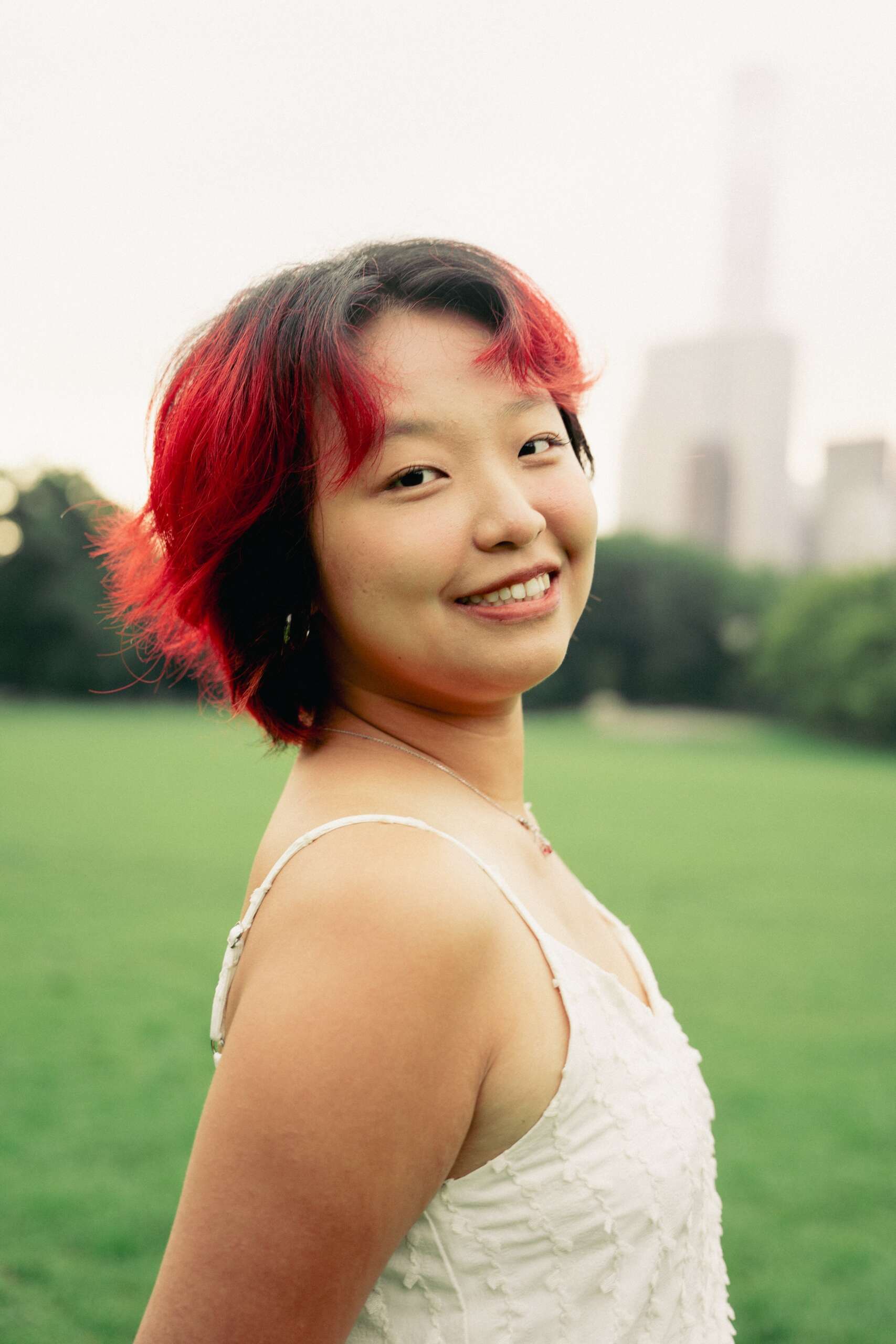We were lucky to catch up with Huiyin Zhou recently and have shared our conversation below.
Hi Huiyin, thanks for joining us today. If you could go back in time do you wish you had started your creative career sooner or later?
Currently based in so-called Durham, NC and at times in NYC, I now work as a community-oriented writer, photographer, and cultural organizer.
Growing up with parents who work in the arts, culture and education sectors in Guangdong, China, I started my creative practice initially as a writer at a young age. Accompanied by my mom, I spent many weekends pouring over diverse kinds of books in public libraries and began publishing writing in local newspapers and journals. I still remember fondly when I earned my first honorarium at the age of nine, I bought myself and my childhood best friend corn-shaped ice cream to celebrate – the sweetness of enjoying a reward for my labor and sharing it with a loved one.
While attending an american-style high school in our province’s capital city Guangzhou, I felt uneasy with the English hegemony I had to internalize to survive this educational system – one that’s at once privileged yet enmeshed in Western cultural imperialism. Then, my racialized encounters as an exchange student in Finland further sparked an intense desire to reconnect with writing in Chinese. Writing became a sacred space of internal dialogue and emotional processing about power-laden relationships during my formative years. In 2019, I published my first collection of essays, 北极时间, on cross-cultural experiences with Shanghai Literature and Art Press.
However, after the work was out in the world, I began experiencing a lot of shame despite the accolades I received. Even though the book came out only months after the manuscript was finished, I became much more critical of the racism and abuse I experienced in Europe and no longer resonated with some of the more idealistic and romanticized writing. In other words, I had outgrown – and even felt betrayed – by my own words that became preserved somewhat permanently in this print form. While I don’t regret having published it at that time, I wish that I had been more protective of my words and wounds. I also wish that I could have been more compassionate to my younger self who was, and still is, constantly unlearning and growing.
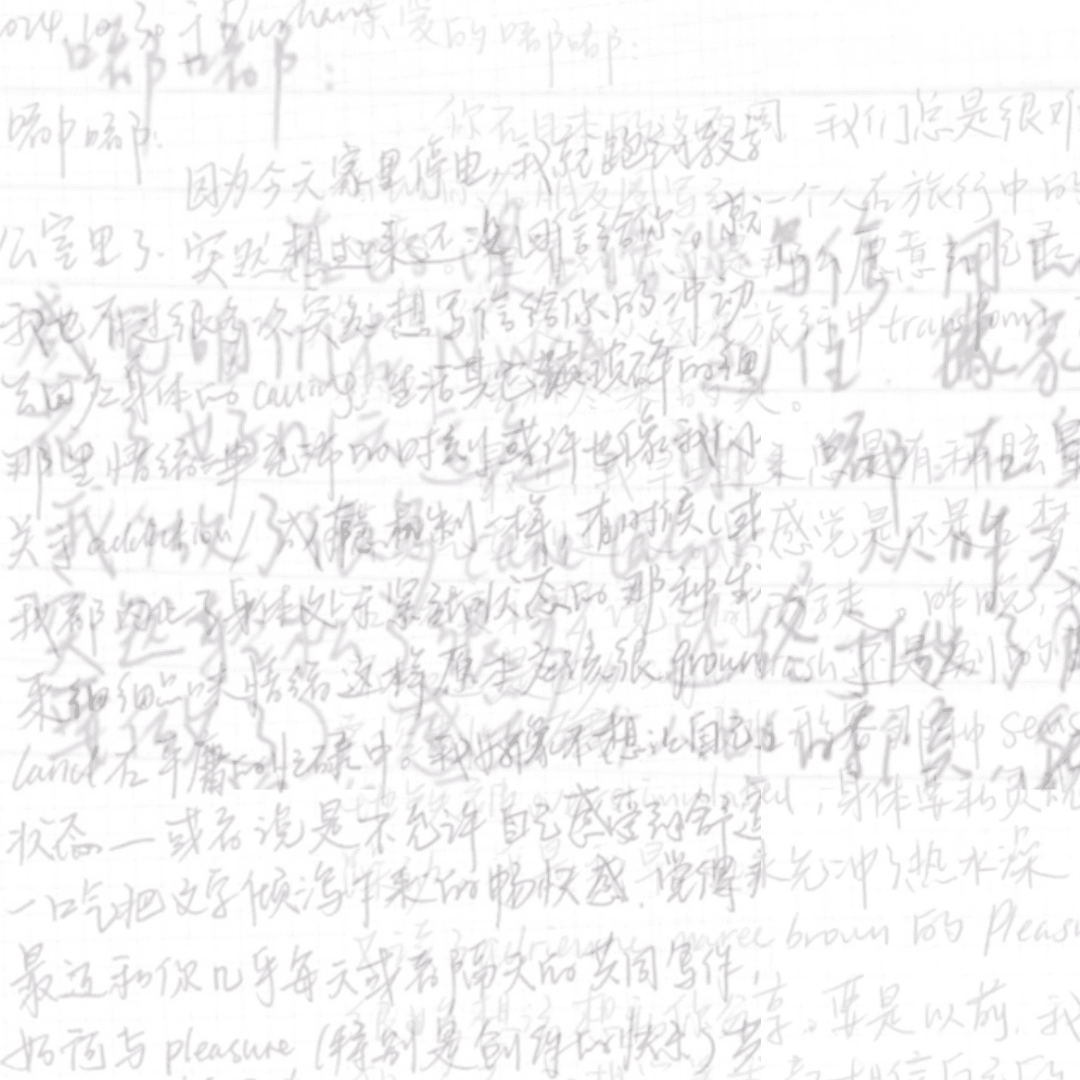
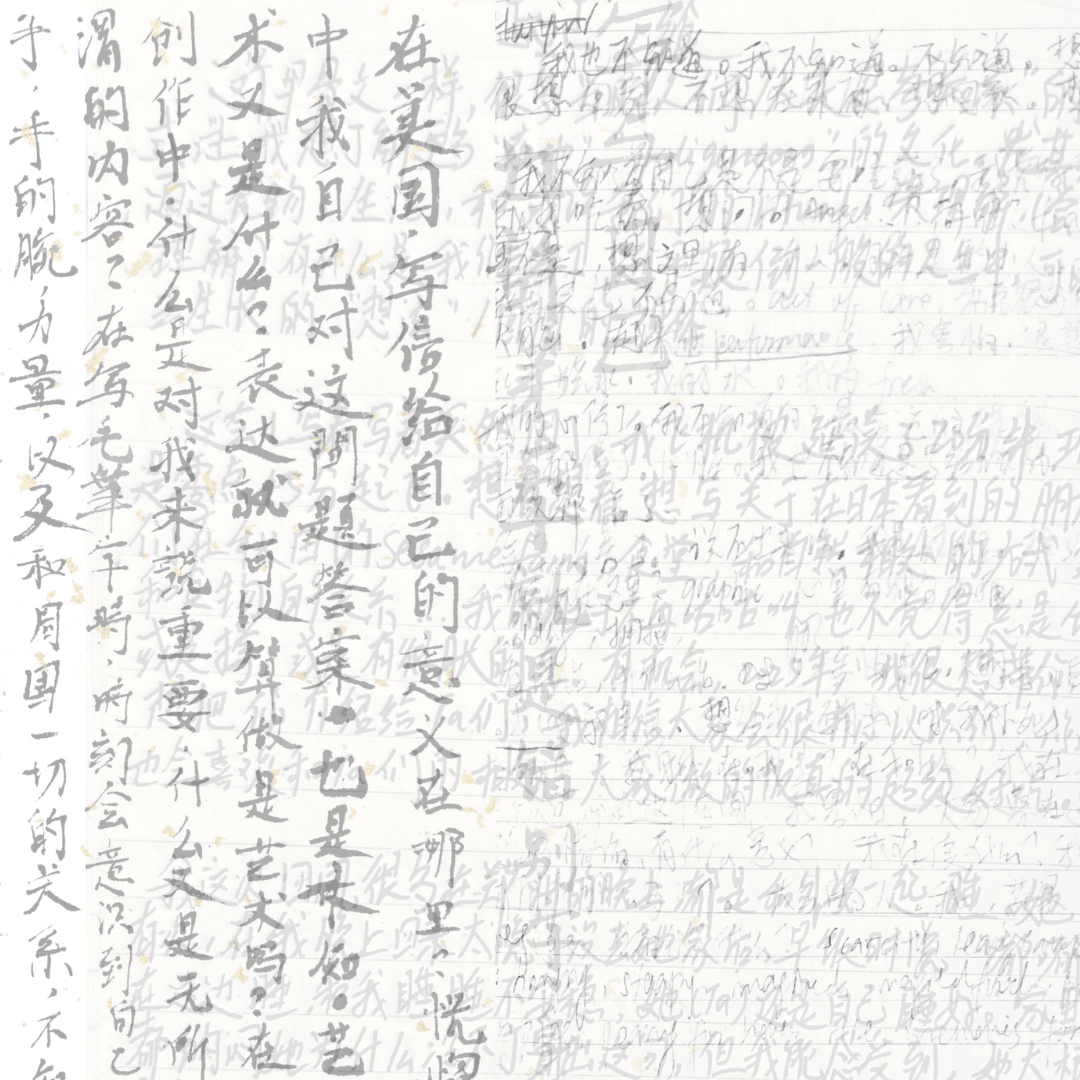
As always, we appreciate you sharing your insights and we’ve got a few more questions for you, but before we get to all of that can you take a minute to introduce yourself and give our readers some of your back background and context?
Hailing from the industrial hub of Dongguan, I am a writer, photographer and cultural worker currently based in Durham, NC and sometimes in NYC. I work with analog and digital photography, installation, somatic practice and performance, rooting my work in queer feminist ethics of care and nuanced embodied experiences from the margins. As a diasporic bird constantly (up)rooting and re-rooting myself, I center transnational abolitionist visions of social justice, kinship, and healing in my community-based art making. I am trained in cultural anthropology, gender studies and ethnic studies and work across academic, artistic, and community organizing spaces.
I am an image-maker, polaroid lover, and grief tender. Photography is my love language, and you will always see me carrying multiple cameras to protests, community gatherings, and art spaces. As a 2024-2025 artist in residence at Durham Art Guild, I will have my first solo exhibition, nostalgia is the ghost of care, at the Golden Belt Gallery from March 4-29, 2025. This body of work features images from my daily encounters with BIPOC queer feminist communities and reimagine nostalgia as a futuristic care practice. There will be several community events throughout the month, with an opening reception Saturday, March 8 at 6pm and a slow art tour with Gail Belvett on March 16, 3pm. Details will be updated on instagram @durhamartguild and @huiyin.zhou and on my website huiyinzhou.com.
As a writer, editor and translator, I have produced social-justice themed multimedia content with unCoVer Initiative 疫中人 and served as Margins editor in chief for Duke Asian/American Studies Working Group. I have also co-led the production of several zines and books featuring collectively written poems from CAO Collective’s ongoing community workshops. My translations and writings have been published by positions: asia critique, Scholar & Feminist Online, Cha: An Asian Literary Journal, Apogee, The Common, and Massachusetts Review. Recently, I published several Chinese poems in 诗林Shilin and 大河Dahe journals.
Collective practice lies at the heart of my creative career. In 2022, along with several other queer feminist friends, I co-founded Chinese Artists and Organizers (CAO) Collective 离离草, a grassroots space focused on community-based art making and healing justice. As co-director of CAO (with Laura Dudu), my role is multilayered and dynamic: artist, organizer, curator, producer – and underlying it all, a friend and community member. Laura and I oversee all aspects of CAO’s art and cultural production, community programming, development, and publicity. In winter 2024, we concluded our first major installation project, The (Ruins of) Ciba Shrine糍粑庙, at BRIC House Gallery as part of to hold a we exhibition curated by Maria McCarthy and danilo machado. Within just two and a half years, we have engaged over 5000 community members online and in-person, run a monthly newsletter, and redistributed thousands of dollars to mutual aid efforts.
My collaboration with creative partner Laura Dudu嘟嘟 extends beyond CAO. We have co-organized the Survivors Anchoring Art Narrative Garden (SAANG 春风吹), an imaginative land and healing space for survivors of sexual violence and cyberbullying. We write letters to each other and collaborate on several projects on family histories, intergenerational healing, and memory work.
2025 is going to be a busy year for me, with projects across North Carolina, New York, and California. Other than my solo exhibit at Golden Belt, I will also have an exhibition, “bodies tender with grief,” at Durham Arts Council Semans Gallery from March 17-May 12, 2025 with Laura Dudu. In the spring, Laura Dudu and I have been invited by Selene Preciado of Los Angeles Contemporary Exhibitions (LACE) to join a transnational letter-writing project called Circuits of Correspondence with artists based across the Americas and Asia Pacific. Throughout the year, our duo is also working on a CulturePush Fellowship for Utopian Practice project, “One Thousand and One Nights,” on diasporic experiences with dreams, sleep and rest. In the fall, we will bring the Ciba Punch 女拳手打糍粑 (sticky rice punching) performance to Raleigh public parks.
I am available for writing/creative consultations, artist talks, workshop/event facilitation, custom commissions and photo/writing assignments both in English and Mandarin Chinese.
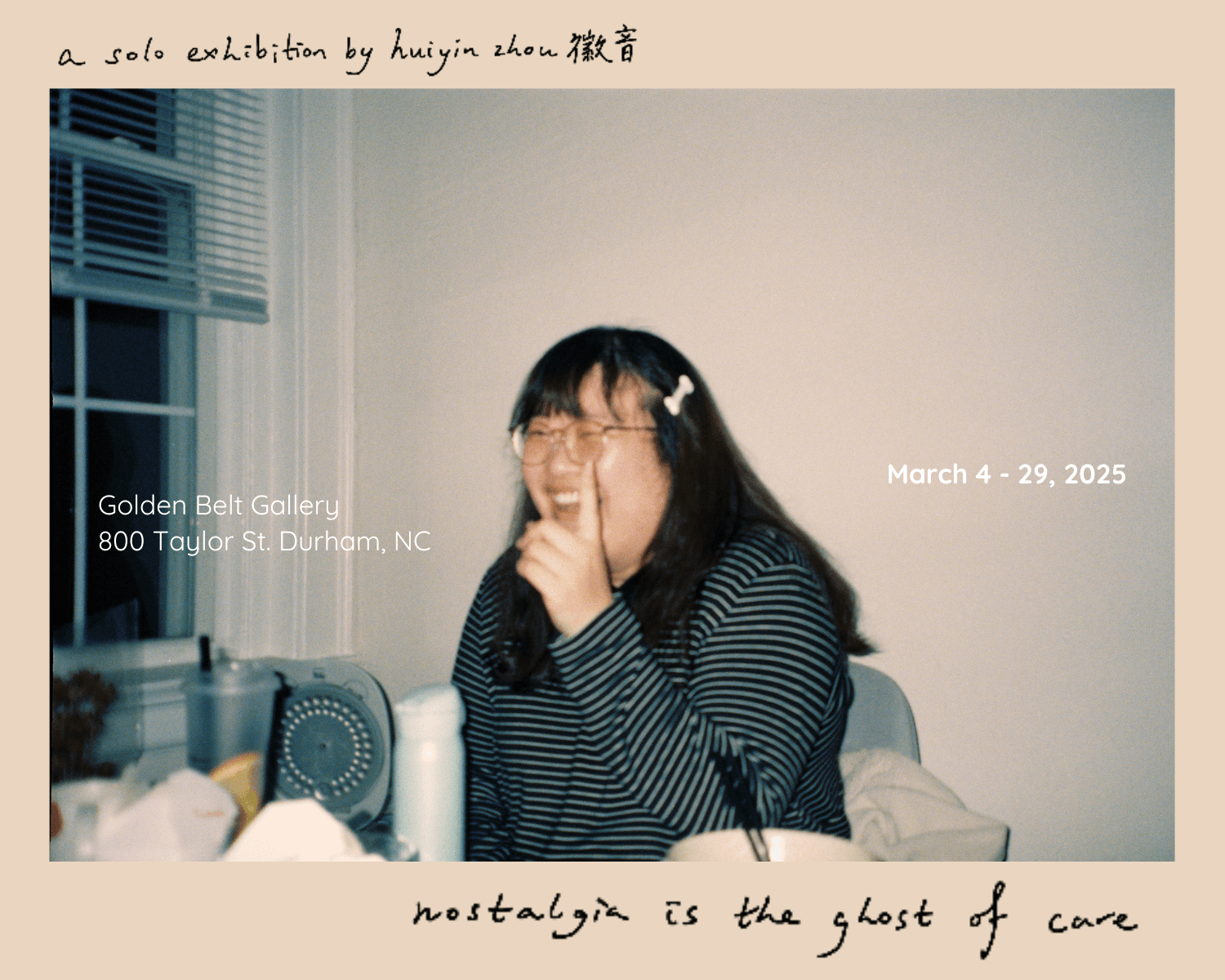
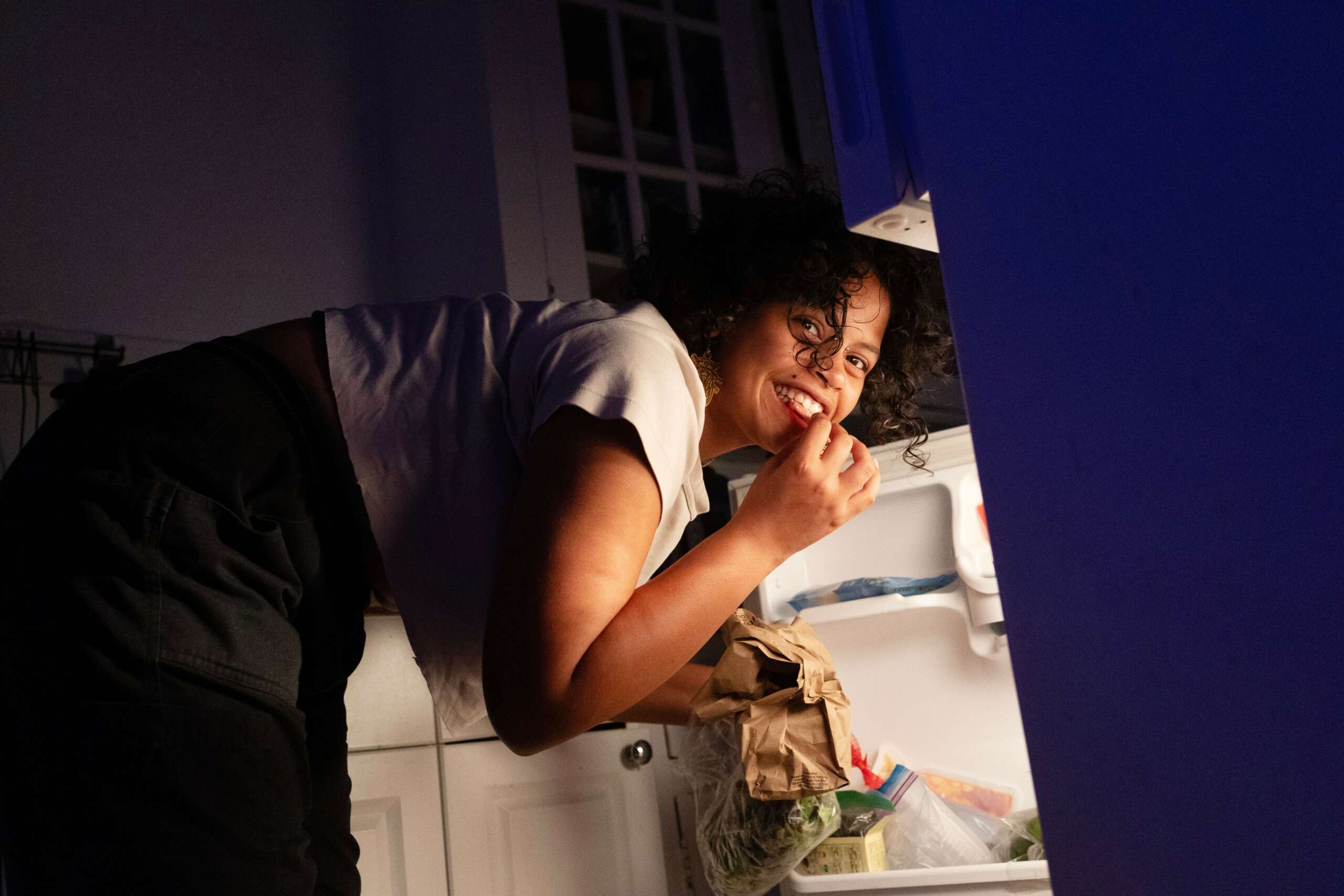
What do you think is the goal or mission that drives your creative journey?
Relational building and community healing through art drive my creative journey. In CAO’s fluid space of co-creation, my collaborator(s) and I make art together and have shown our work in numerous exhibitions, but we also provide art and cultural programming that empowers participants to create art together. We regularly collaborate with other queer BIPOC artists, organizers, and collectives to offer diverse programming both virtually and in person. As much as the space has grown with our care, it has also taught me invaluable skills: how to facilitate collective art workshops, organize community gatherings and food performances, produce zines and poetry books and constantly rethinking intentional space-building.
In my individual practice, I see photography as a deeply relational and intimate practice of witnessing our own history in the making. Having worked on several archive-based research projects, I am pained by the lack of community-based archives that could help me better connect with radical queer feminist lineages especially in the Sinophone world. I believe that practices of resistance and love in everyday life are worth documenting. I hope that my image making and writing contribute to world building and dreaming of alternative and just futures.
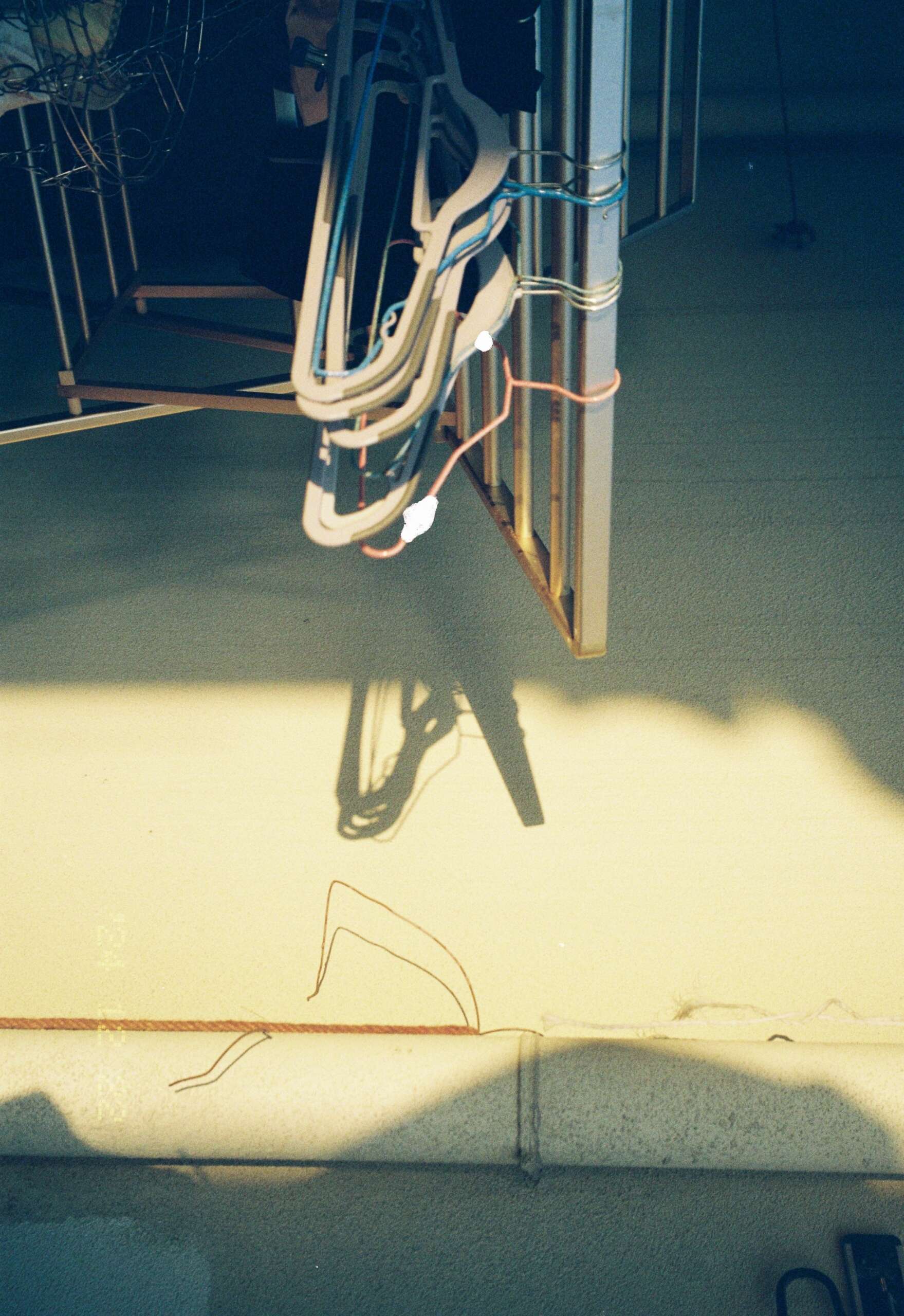
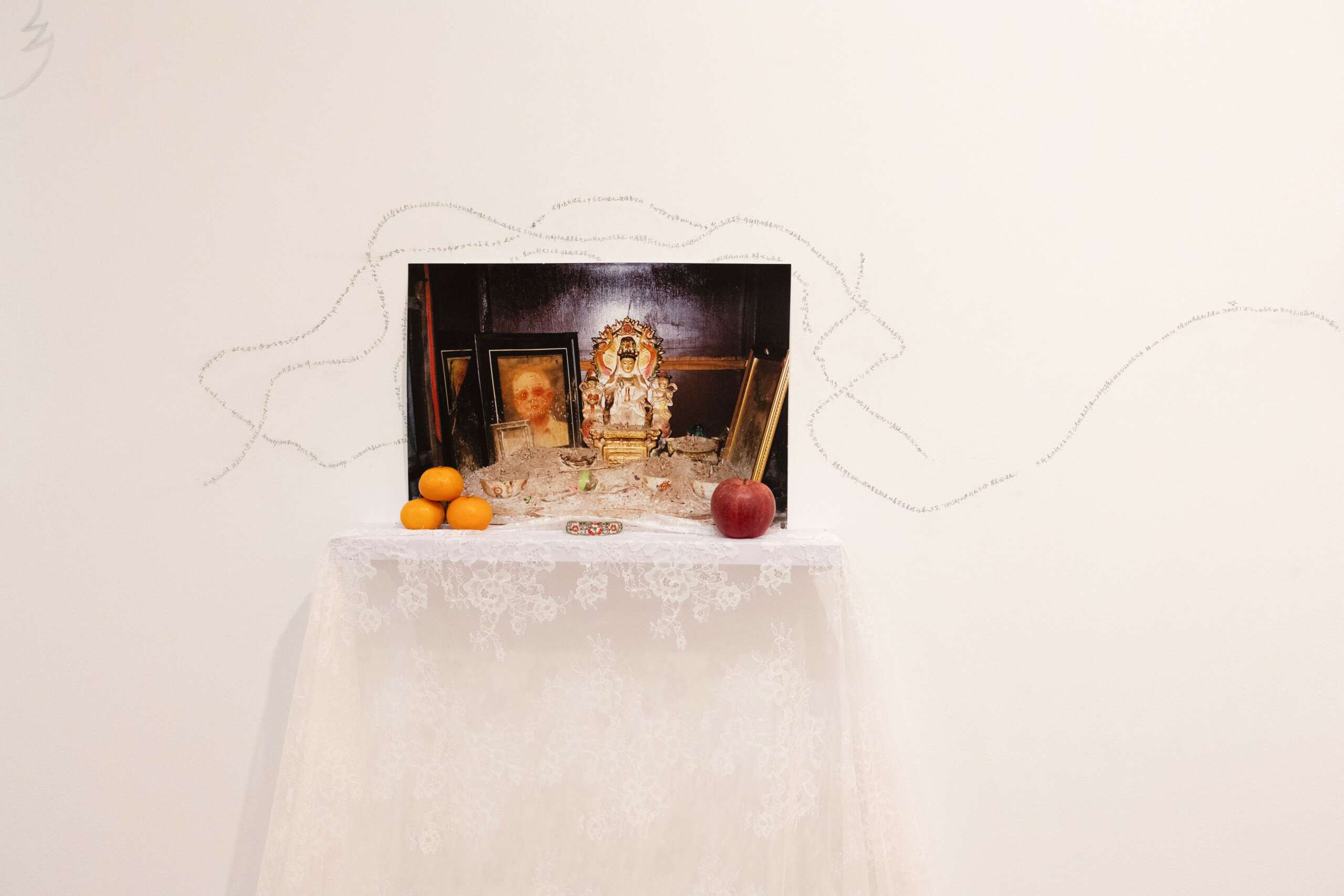
What’s a lesson you had to unlearn and what’s the backstory?
From 2020 to 2023, I experienced a major “writer’s pause,” a term one of my college professors, poet Jaki Shelton Green, first introduced to me as an alternative to the usual “writer’s block.” My heart was filled with grief and rage as I witnessed tragedies of the still ongoing Covid-19 pandemic both in China and the US. Writing, as a deeply intimate and reflective practice, brought me closer to the pain and became too much to bear. My “mother” language is fractured by heavy censorship and my geographical distance since moving to the US on a student visa in 2021. On the other hand, English – a colonizing tongue – has always been a professional or academic language, a tool of gatekeeping but also a vehicle of international cultural capital. I feared writing in Chinese would heighten my political risks and bring me too close to feelings I was not ready to confront. At the same time, I was afraid to step into writing creatively in English. Fears of being constantly misunderstood and feelings of undeservedness tethered me in both languages, and therefore I stopped writing.
Fortunately, in 2022, I took up photography and began exploring the creative joy brought by being an amateur in a new medium. I played with Fujifilm’s disposable film cameras, Polaroids, and different 35mm and 120mm film cameras. In 2023, I also began shooting on mirrorless digital cameras to improve my technical capabilities, diversify my creative range and reduce film-related costs. I have since worked on many community-based photo projects focused on queer feminist kinship and diasporic organizing, both as an individual and in collaboration with the Chinese Artists and Organizers (CAO) Collective.
In recent months, I began returning to writing and exploring writing creatively in both Chinese and English. Classically trained in Chinese calligraphy and a lover of handwritten letters, I am also incorporating handwriting and visual poetry in my photo process. I am enjoying being an amateur again and letting go of expectations. I’ve come to realize that it is not conducive to frame creative practice around being correct or having my work stay true or relevant all the time, an impossible criteria for anyone to meet. Instead, creativity is about play and making a mess, and hopefully forging and rediscovering connections and truths along the way.
Once the work is out there, I have to release a sense of control or ownership and trust that the work will reach or touch who needs it, even if it may no longer even speak to myself in the future.
At this stage of my creative practice, I am anchoring myself with less fear of failure and more excitement for experimentation and magic. I can’t wait to share more work with the world, trusting that my instincts will guide me to timing and spaces that feel right.
Contact Info:
- Website: https://huiyinzhou.com/
- Instagram: https://www.instagram.com/huiyin.zhou/
- Other: https://www.instagram.com/caocollective/
https://caocollective.com/
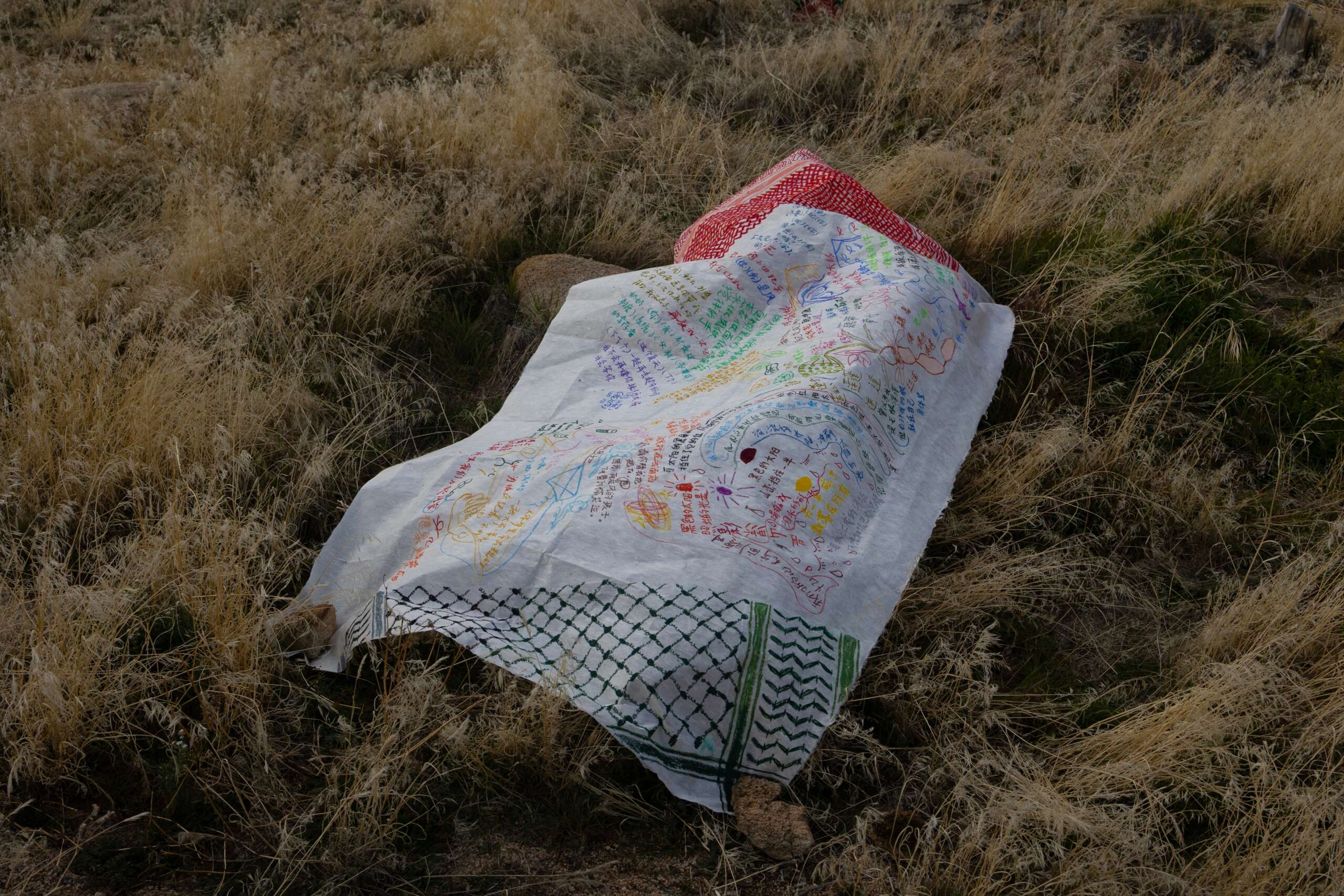
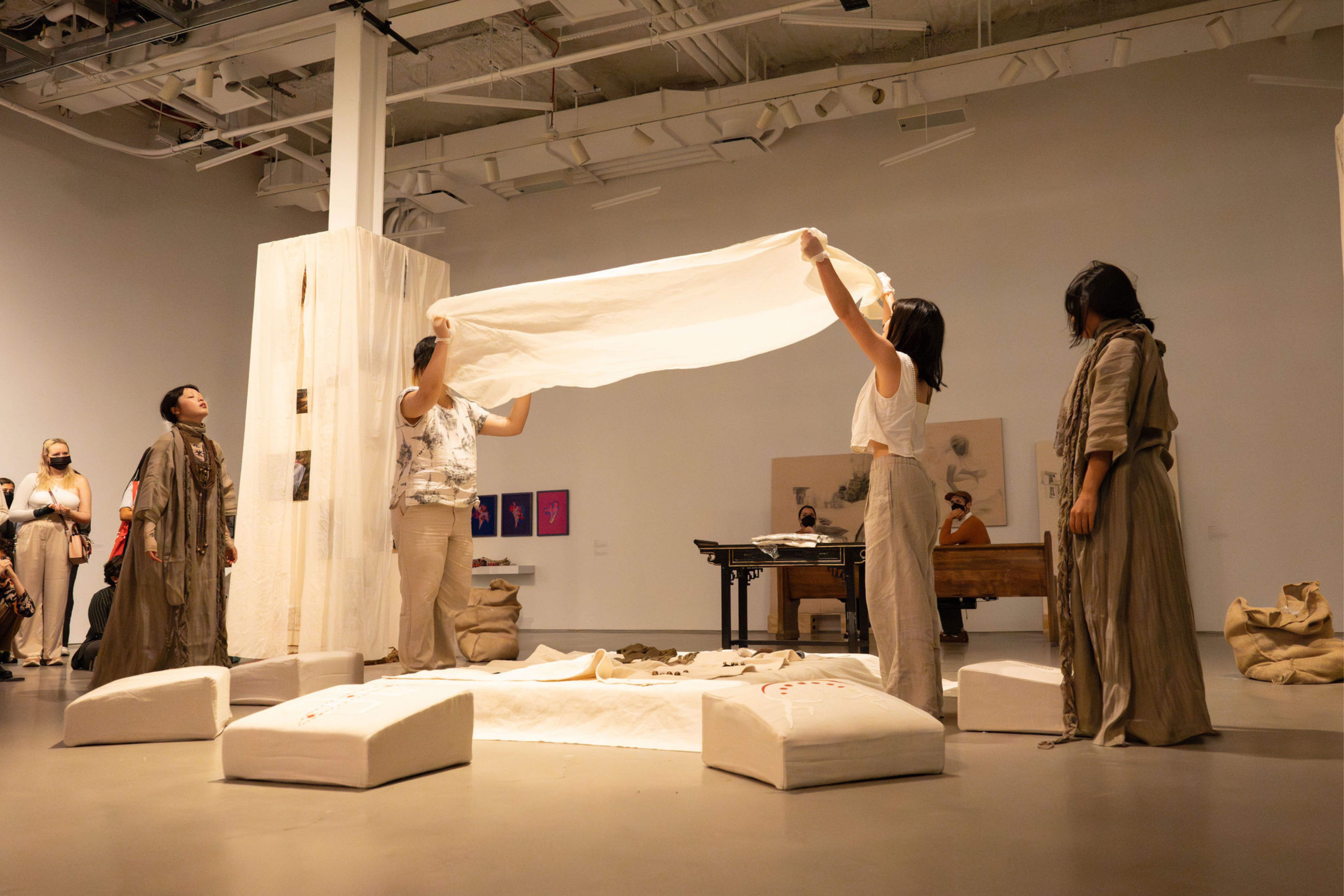
Image Credits
Images 1-2: letters between huiyin zhou and Laura Dudu
Image 3: nostalgia is the ghost of care solo exhibition graphic, designed by huiyin zhou and yanki k
image 4: “tashia at my kitchen before a potluck,” photo by huiyin zhou
image 5: “love is just a memory,” photo by huiyin zhou
image 6: “tending,” mixed-media installation from huan xiang: illusion, imagination, impossibility, of home series, by huiyin zhou
image 7: “shroud”, from Good Mourning, by huiyin zhou and CAO Collective
image 8: Ciba Punch, opening performance at to hold a we exhibition, CAO Collective with Julia Santoli and Alice Wang, BRIC Brooklyn, photo by Toby Tenenbaum


